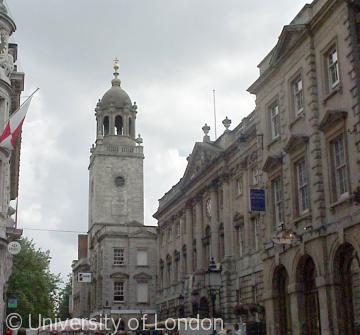All Saints' Church

All Saints Church dates from around the early 12th century and has been enlarged and altered over successive centuries, most notably: 15th century east nave and aisles, 1716 north-east tower by William Paul, completed by George Townesend, lantern rebuilt by Luke Henwood in 1807, and the rebuilt chancel in the mid 19th century.
The church contains the graves of, and memorials to a number of eighteenth century Bristol merchants and businessmen. The church also contains the tomb of Edward Colston (1636-1721). In 1683 Colston became a member of the Merchants' Hall and is listed as a West India merchant who traded primarily in St Kitts. Merchants controlled the city's foreign trade owned and invested in slave voyages and other activities related to the slave trade and lobbied Parliament to protect the city's slaving interests. Colston amassed his fortune by owning a large fleet of ships trading in sugar. This may account for the fact that engraved on his tomb is a list of all his charitable bequests but no mention of his involvement in the slave trade, nor of his trading interests in the sugar plantations of the West Indies. Colston helped to fund the restoration of the All Saints Church's tower in 1716.
Content generated during research for the paperback book 'Bristol: Ethnic Monorities and the City 1000-2001' (ISBN 13 : 978-1-86077-477-5 ) for the England's Past for Everyone series


